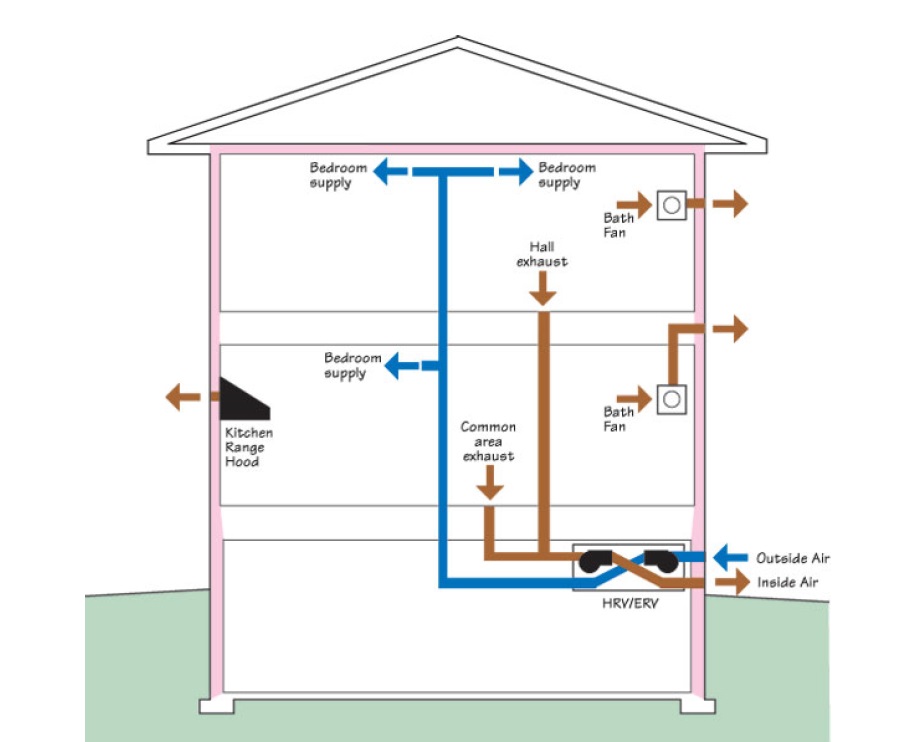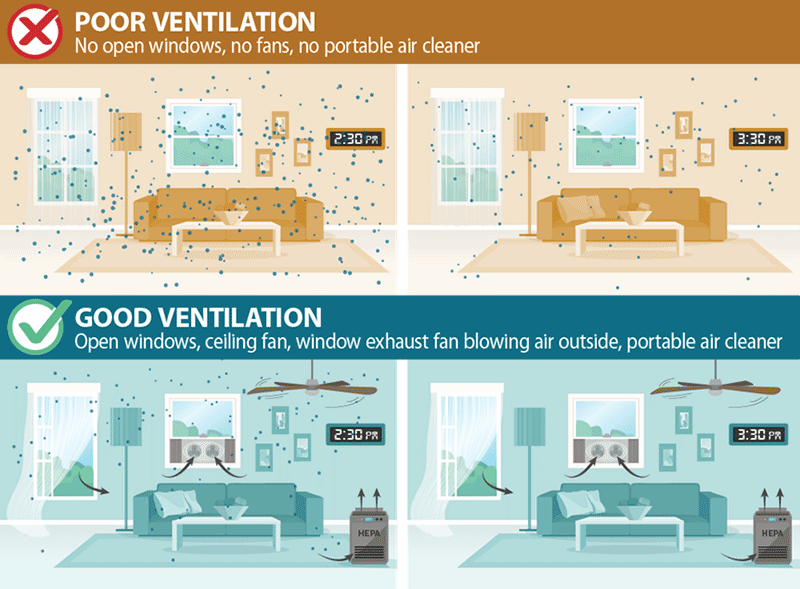The Function of Home Air Flow in Protecting Against Mold And Mildew and Indoor Allergens
Home air flow is a critical component in preserving a healthy indoor atmosphere. It manages moisture degrees, which can avoid the development of mold and mildew and the buildup of allergens. Many house owners ignore the value of proper air flow, frequently resulting in unseen concerns. Comprehending exactly how air flow systems function and their effect on air quality might be the trick to a much healthier space. What steps can be taken to boost these systems efficiently?
Understanding Home Air Flow Systems
While lots of property owners may ignore the significance of ventilation, recognizing home air flow systems is crucial for maintaining indoor air high quality and avoiding mold and mildew development - Home Ventilation Melbourne. These systems assist in the exchange of stagnant interior air with fresh outside air, properly lowering contaminants and dampness degrees. Typical kinds consist of all-natural ventilation, which relies upon wind and temperature level distinctions, and mechanical ventilation, which uses air ducts and followers to regulate air flow. Furthermore, balanced air flow systems incorporate both techniques to optimize air top quality. Properly created and maintained air flow systems can help control temperature and humidity, ensuring a comfortable living atmosphere. Home owners ought to take into consideration elements like home layout, environment, and occupancy when picking an air flow system to best suit their needs and improve total air high quality
The Impact of Humidity on Mold And Mildew Development
Humidity plays an important function in mold and mildew growth, making it a crucial factor for home owners to monitor. Mold grows in atmospheres where humidity levels surpass 60%, as these conditions offer the wetness needed for spores to germinate and multiply. High moisture can arise from numerous resources, consisting of bad air flow, water leakages, and cooking or bathing tasks. When moisture levels stay elevated, mold can create quickly on organic products such as drywall, fabric, and timber. House owners ought to make use of dehumidifiers and ensure correct air flow in locations prone to dampness, such as cellars and restrooms. Preserving interior humidity in between 30% and 50% can greatly minimize the danger of mold growth, contributing to a much healthier living setting.
Identifying Typical Indoor Allergens
Indoor atmospheres can nurture a variety of allergens that impact health and wellness and comfort. Usual indoor allergens include allergen, pet dander, mold spores, and plant pollen. Dirt termites grow in bed linen, carpetings, and furniture, eating organic material and contributing to respiratory concerns. Pet dander, composed additional resources of small flakes from skin and hair, can activate sensitive reactions in delicate people. Mold spores, commonly present in damp locations, can affect and multiply air high quality. Furthermore, plant pollen can infiltrate homes through open windows or on apparel. Determining these irritants is essential for maintaining a healthy interior setting. Recognition of their existence allows property owners to take positive procedures to reduce exposure and enhance overall indoor air top quality.
Advantages of Proper Air Flow
Proper air flow is vital for preserving a healthy interior setting, as it helps to manage air quality and minimize the accumulation of contaminants. Sufficient airflow promotes the exchange of indoor and outdoor air, therefore diluting harmful compounds such as unstable organic compounds, allergens, and dirt. This procedure not only enhances comfort yet likewise adds to the total wellness of occupants by minimizing respiratory concerns (Home Ventilation Melbourne). Moreover, proper ventilation see this effectively controls humidity levels, decreasing the probability of mold development and promoting a drier environment favorable to health and wellness. Additionally, it can boost power effectiveness by ensuring that home heating and cooling systems operate extra efficiently, resulting in lower energy expenses. Overall, appropriate ventilation is a crucial part in promoting a safe and healthy and balanced space

Tips for Improving Home Ventilation
Several home owners might ignore it, boosting home ventilation is vital for enhancing air top quality and preventing mold and mildew development. One efficient method is to on a regular basis open windows to advertise cross-ventilation, permitting fresh air to circulate. Setting up exhaust followers in bathroom and kitchens can effectively get rid of moisture-laden air, decreasing moisture levels. House owners ought to likewise think about utilizing air cleansers with HEPA filters to catch pollutants and irritants. Regularly keeping a/c systems, consisting of altering filters, warranties come to a head air movement and effectiveness. Securing leaks around windows and doors can prevent outside air from going into, which aids keep a regular interior setting. Incorporating houseplants can naturally enhance air top quality while adding aesthetic worth to the home.
Frequently Asked Concerns
Just how Usually Should I Tidy My Home Air Flow System?
Figuring out exactly how commonly to clean a home ventilation system depends on different variables, consisting of usage and ecological problems. Home Ventilation Melbourne. Normally, professionals suggest a comprehensive cleaning every 3 to five years to preserve excellent air movement and efficiency
Can Plants Help In Reducing Indoor Allergens?
Research study shows that certain indoor plants might help in reducing allergens by improving air top quality and boosting moisture. Their effectiveness differs, and preserving a clean setting stays essential for managing interior irritants effectively.
What Kinds of Air Filters Are Finest for Mold Avoidance?

Are There Certain Ventilation Demands for Cellars?

How Do I Know if My Air Flow Is Working Properly?
To figure out effective air flow, one must check moisture levels, check air flow via vents, and observe signs of condensation or stagnant air. Regular assessments can show whether the system appropriately distributes and exchanges interior air.
Recognizing how ventilation systems function and their impact on air quality can be the trick to a healthier living room. While numerous home owners may forget the relevance of air flow, recognizing home ventilation systems is important for preserving interior air quality and avoiding mold growth. Usual kinds include natural ventilation, which counts on wind and temperature level differences, and mechanical air flow, which uses followers and air ducts to regulate air flow. Correct air flow is essential for maintaining a healthy and balanced interior environment, as it assists to manage air quality and decrease the build-up of contaminants. Many home owners might forget it, boosting home ventilation is necessary for improving air high quality and stopping mold development.